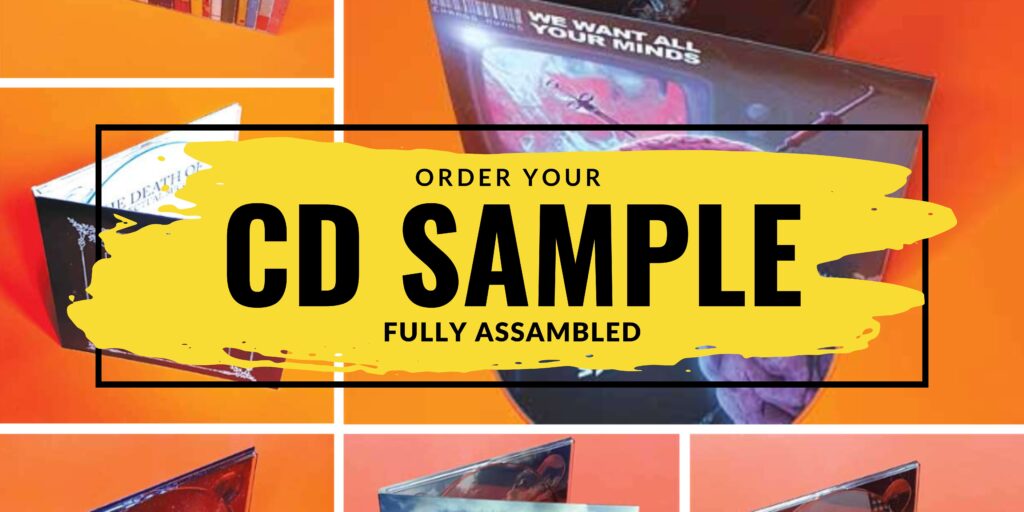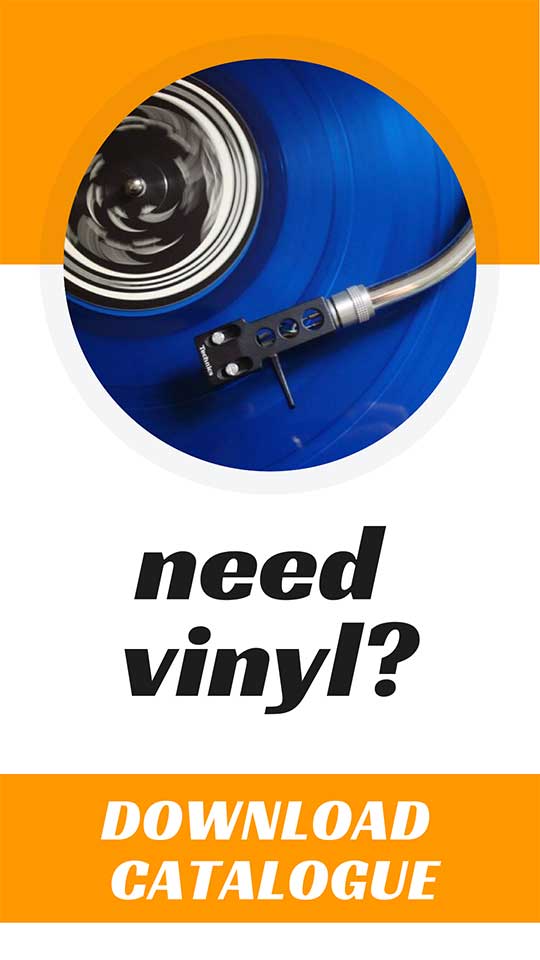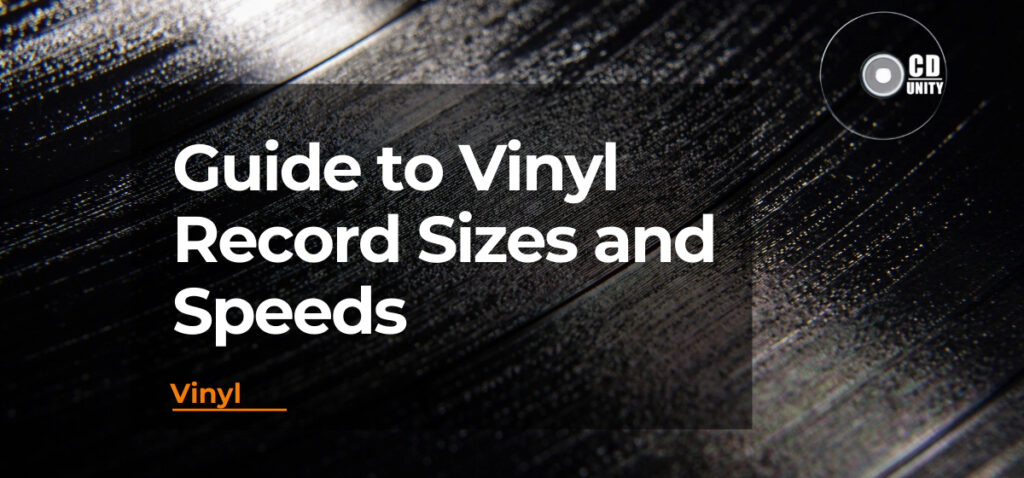
Vinyl Record Sizes And Speeds
Are you puzzled by the different sizes and speeds of vinyl records? Vinyl records come in various sizes, each with unique playtime and sound quality. This guide will help you understand these differences.
Keep reading to become a vinyl expert!
Key Takeaways
- Vinyl records come in three main sizes: 7-inch, 10-inch, and 12-inch. Each size has its own playtime and sound quality.
- Speeds for vinyl records include 33 1/3 RPM, 45 RPM, and 78 RPM. Higher speeds often offer better sound but shorter playtimes.
- The first true disc record was introduced by Emile Berliner in 1888. By the mid-20th century, Columbia Records’ 33 RPM and RCA Victor’s 45 RPM formats became standards.
- Modern listeners enjoy vinyl for its rich sound and nostalgic value. Events like Record Store Day fuel this ongoing trend.
Understanding Vinyl Record Sizes
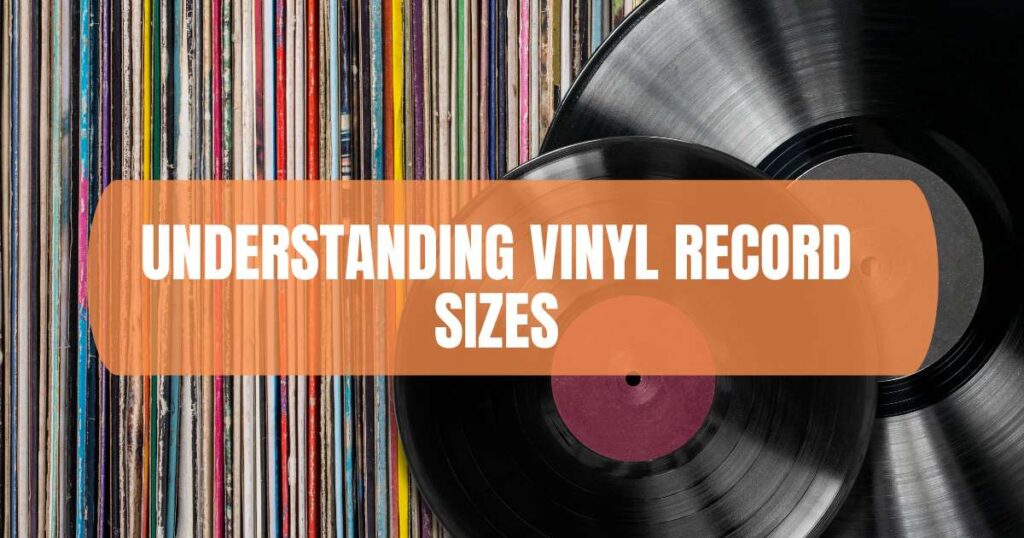
7-Inch Records
7-inch records play at 45 RPM. These discs typically feature one song on each side, making them ideal for singles. RCA introduced this format in 1949, and it quickly became the standard for singles due to its practical size.
Designed with a large hole in the centre, these records were perfect for jukeboxes. Musicians loved how easy they made distributing new hits. Compact yet powerful, they hold a special place in vinyl collections…
especially among those who appreciate classic tunes!
10-Inch Records
10-inch records hold 10-15 minutes of music per side. They play at speeds of either 33 1/3 RPM or 78 RPM. These records were widely used before the 1950s, mainly for EPs or limited-edition releases.
Musicians often seek these records due to their rarity and historical value. Collectors prize them as they capture a unique piece of music history. The small size offers less playing time but often provides exceptional sound quality compared to some larger records.
12-Inch Records
12-inch records are the standard diameter for full albums. They play at 33 1/3 RPM and can hold up to 22 minutes of music per side. Larger grooves on these records provide superior sound quality, making them a favourite among audiophiles.
These records became popular for longer albums and storytelling. Musicians use them to create more complex projects, adding depth to their work. In today’s digital age, vinyl remains a cherished format due to its rich sound and nostalgic value.
Browse our CD duplication products
Exploring Record Speeds
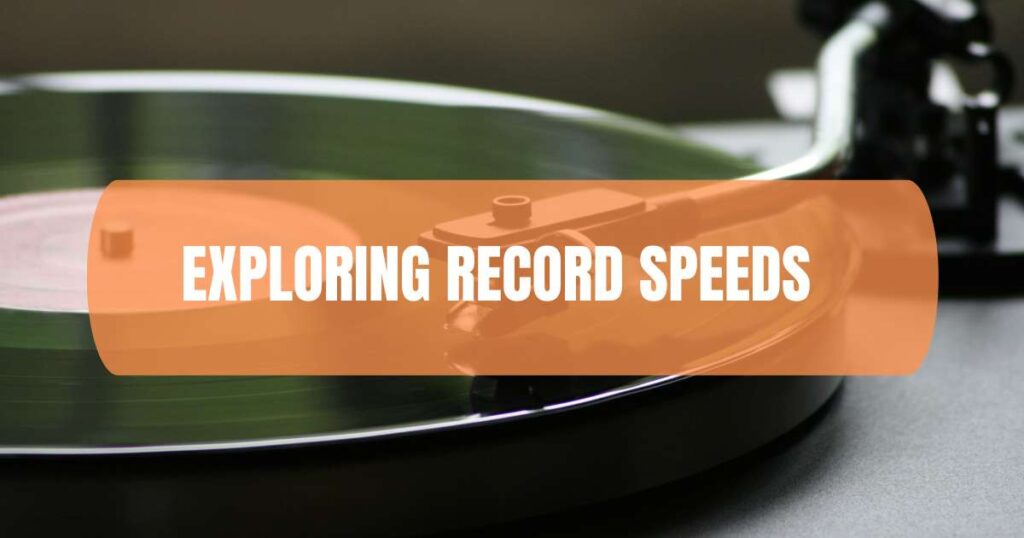
33 1/3 RPM
33 1/3 RPM is the standard speed for most 12-inch records and many 10-inch ones. This speed allows about 22 minutes of music per side. Columbia Records introduced this format in 1948, aiming to strike a balance between sound quality and music capacity.
Musicians appreciate this speed because it supports both longer playtime and better sound definition. Lower production costs also made these records more accessible. Less wear on the vinyl meant your favourite tracks stayed clearer for longer…
perfect for true audiophile
45 RPM
45 RPM records were introduced by RCA in 1949. These vinyl discs became a standard for 7-inch records and sometimes used for 12-inch ones too. They spin at 45 revolutions per minute, making the needle on the record move faster.
This speed offers superior sound quality compared to 33 RPM records.
Though they hold less music per side, this wasn’t a big deal since many singles fit just fine on them. Record collectors loved their crisp and clear audio. Jukeboxes often played these vinyl formats due to their great sound and compact size.
Many musicians release singles or smaller collections on these discs even today, keeping the tradition alive.
78 RPM
78 RPM records were the first standard speed for vinyl. They spin at 78 rotations per minute, hence the name. The size used was usually 10 inches, and this format gained popularity by 1925.
These records often hold about three minutes of music on each side. Because they spin so quickly, they wear out faster than other types.
After the 1950s, most record companies stopped making them. Now, collectors find these older discs in vintage shops and record stores. If you play one today on a modern turntable or with a stylus designed for it, be gentle to avoid further damage.

The Evolution of Vinyl Record Speeds
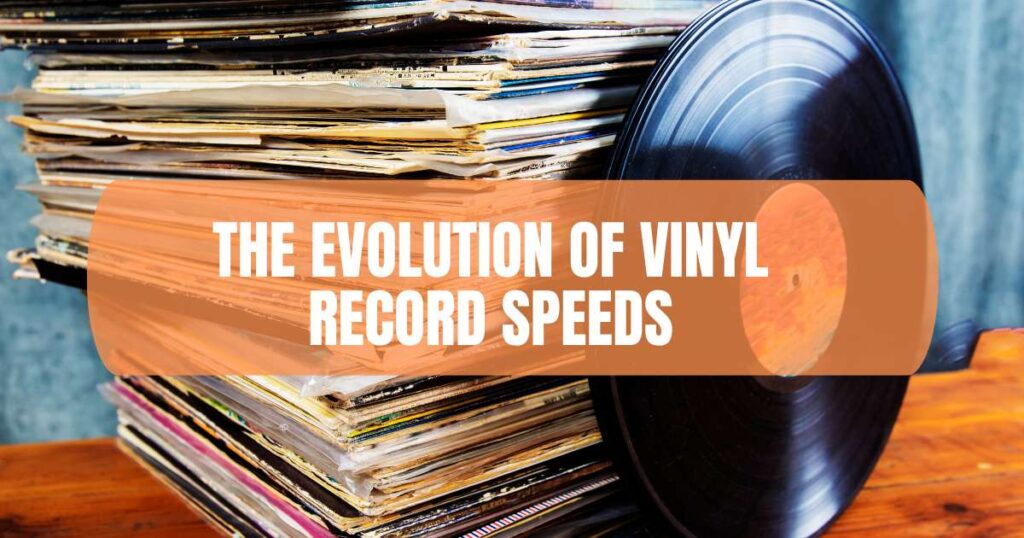
The Creation of 78 RPM
Emile Berliner introduced the first true disc record in 1888. This laid the groundwork for future records. Early phonographs used hand-cranking mechanisms, making them less reliable.
By 1925, engineers standardised the speed at 78 RPM due to a motor’s performance of 3600 RPM divided by 46. The introduction of this speed made records consistent and easier to play on new devices that featured electric motors instead of hand cranks.
The Advent of 33 RPM Records
In 1948, Columbia Records introduced the 33 RPM (revolutions per minute) record. This marked a big change in music. These records allowed up to 21 minutes of playtime on each side.
This was a game-changer for musicians and listeners alike. Longer playtimes meant entire albums could be enjoyed without constant flipping or switching records. Also, this new speed kicked off the “War of Speeds” in the music world.
The 33 RPM record soon became one of the standard speeds. This helped shape how people created and listened to music for decades to come.
The Release of 45 RPM
RCA Victor introduced the 45 RPM record in 1949. This new format was a game-changer for vinyl records, offering better sound quality and durability than previous formats.
Different colours of these vinyl discs represented various music genres. The 45 RPM allowed for two to five minutes of play per side, perfect for singles. Later, in June 1958, the first Stereo 45 RPM record hit the market, bringing depth and richness to listeners’ favourite tracks.
Impact of Size and Speed on Sound Quality
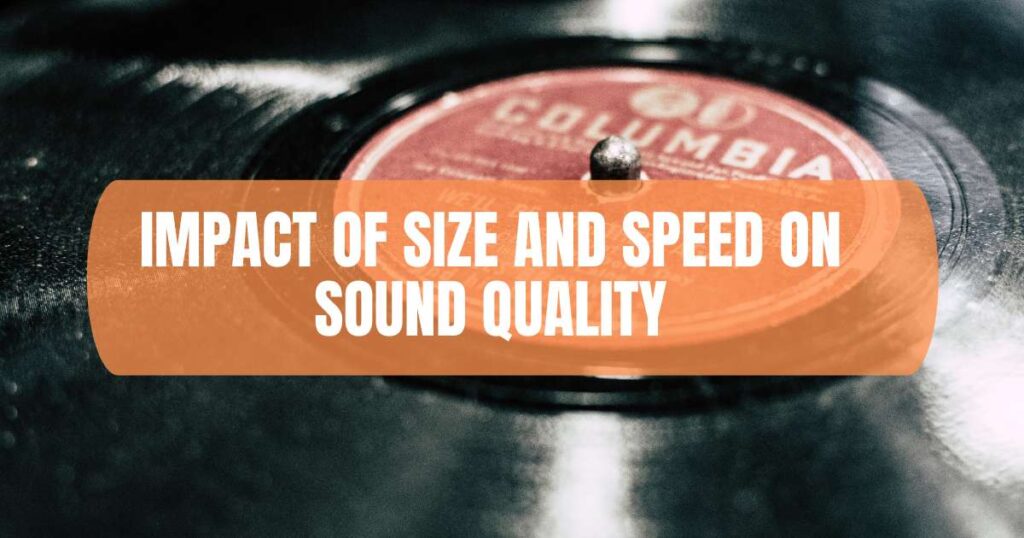
How Size Affects Sound
Larger records, like 12-inch vinyl, hold more music. They often play at 33 RPM. This size allows up to 20 minutes of music per side. The wider grooves also improve the bass and overall sound quality.
Smaller records, such as 7-inch ones, typically have less room for music but often play at faster speeds like 45 RPM or even close to 80 RPM. These smaller sizes are great for singles but may lack in-depth sound details compared to their larger counterparts…
more compact means less space for wide grooves!
How Speed Influences Playback
Higher playback speeds like 45 RPM give better sound quality than 33 RPM. This is because faster speeds provide a longer section of the groove for each sound wave. So, sounds are clearer and less distorted.
On the other hand, records that spin at 78 RPM offer even better sound but have a shorter playback time—around 10 minutes per side. Musicians will notice richer details in music on these records due to more grooves packed into one second of playtime.
However, they must change sides more often… making it less convenient for long listening sessions.
The Modern Revival of Vinyl Records
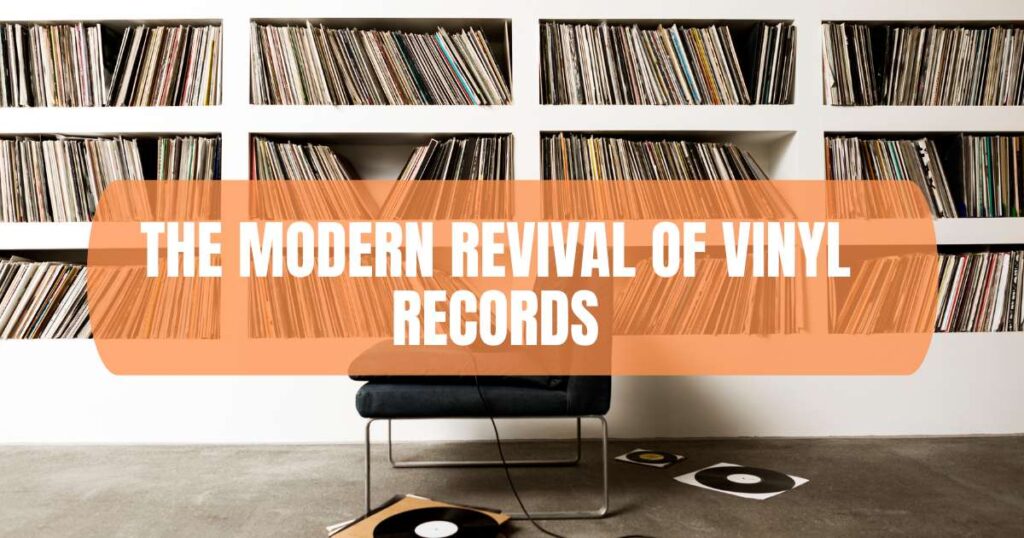
Reasons Behind the Resurgence
Many people today want authentic experiences. Digital music lacks the charm and ritual of vinyl records. Listening to a record involves picking it out, placing it on the player, and enjoying the unique sound quality.
This hands-on process gives listeners a sense of connection.
Another reason is storytelling. Each vinyl record has its own story—from production to pressing—and collectors appreciate this history. Musicians also enjoy creating albums that tell a story from start to finish, which digital formats often disrupt with singles and playlists.
Shoppers find vinyl records durable yet cheap to make, making them accessible for both new artists and die-hard fans alike. Traditional marketing mostly highlights cost and utility—vinyl brings something more personal into play…
an experience that resonates deeply with listeners who crave more than just convenience.
All in All
Understanding vinyl record sizes and speeds can deeply enrich one’s connection to music. Each size and speed brings unique qualities to the listening experience. With a resurgence in popularity, vinyl records have found their place even in this digital age.
For those passionate about sound, these details matter greatly. Enjoy exploring the rich sounds that only vinyl can offer!
Cheers, Josh
The Big Lists Of Music Promo Contacts
Includes PR companies, UK promoters & UK booking agents. Everything you need to put your band on the map.
Access Lists
Hello, I’m Josh, and I’ve been honing my graphic design skills for almost 15 years now, catering to the needs of bands and businesses alike. What really fascinates me is the business aspect of the music industry. In addition to my design work, I also happen to play the Hammond organ, and I strive to share my knowledge through helpful articles that I write exclusively for you all!

